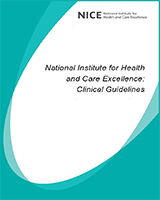From: Chapter 13, Community rehabilitation

NCBI Bookshelf. A service of the National Library of Medicine, National Institutes of Health.
| Study | Intervention and comparison | Population | Outcomes | Comments |
|---|---|---|---|---|
|
Admission avoidance Comparison: Community rehabilitation versus routine hospital services | ||||
|
Cowie 201256 RCT UK |
Home based: 1 hour aerobic based exercise session- DVD and booklet The session started with a 15 min warm-up and ended with a 15 min cool-down. Participants in both home and hospital groups were educated on symptoms of unstable heart failure, and avoided exercise where instability was suspected. A physiotherapist telephoned the home group every 2 weeks to modify their exercise prescription where appropriate. For monitoring of adherence and exercise intensity, the home group completed a diary detailing every session completed Versus Hospital based 1 hour aerobic based exercise session- exercise session was a physiotherapist led class |
n=60 Patients with heart failure (NYHA class II/III) | Quality of life | Follow-up at 8 weeks |
|
Kalra 2000134 RCT | Hospital outreach admission avoidance multi-disciplinary with joint care from community services. Care was provided by a mix of outreach and community staff including physiotherapy, occupational therapy, social worker and a speech therapist versus Hospital admission (inpatient stroke team care or admission to a stroke unit) |
Patients recovering from a moderately severe stroke Median (IQR) age T=75 (72-84) C=77.7 (67-83) | Mortality; | Included in Cochrane (Shepperd 2008) |
|
Ricauda 2004192 RCT |
Hospital outreach admission avoidance (services operated from an accident and emergency department). 24 hour care available multi-disciplinary team: physiotherapist, occupational therapist, nursing, hospital geriatrician, social worker, speech therapist, psychologist Versus Hospital admission | Patients recovering from a stroke |
Mortality; Length of treatment; Activities of daily living; Functional impairment; Living in an institutional setting; Canadian Neurological Scale Score; National Institute of Health Stroke Scale Score; Geriatric Depression Scale score | Included in Cochrane (Shepperd 2008) |
|
Cochrane review |
Admission avoidance hospital at home schemes compared to acute hospital inpatient care. The schemes may admit patients directly from the community or from the emergency room. Definition used by the authors: hospital at home is a service that can avoid the need for hospital admission by providing active treatment by health care professionals in the patient’s home for a condition that otherwise would require acute hospital in-patient care, and always for a limited time period. In particular, hospital at home has to offer a specific service to patients in their home requiring health care professionals to take an active part in the patients’ care. | Patients aged 18 years and over that were included in admission avoidance hospital at home schemes | Mortality, Re-admissions, Patient satisfaction, Carer satisfaction, Length of stay in hospital and hospital at home | 10 studies in Cochrane review, of which 2 studies included in our evidence review. |
From: Chapter 13, Community rehabilitation

NCBI Bookshelf. A service of the National Library of Medicine, National Institutes of Health.